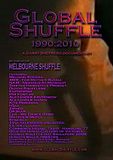This post is about another of those dualities, albeit a considerably subtler one: the two distinct meanings of the word "minimalism" in popular music. Neither messes with tonality and both work towards some sort of reduction, but beyond that they're very different.
 The first meaning comes from descriptions of popular music. "Minimalism" in this case involves the reduction of the number of tracks, the simplification and "cleaning up" of timbre and melody, the removal of traditional harmony and progression, quite simply the creation of as reduced a pop track as possible. Something along the lines of Laffy Taffy by D4L, striving towards bouncy rhythmicality and tiny, economical hooks.
The first meaning comes from descriptions of popular music. "Minimalism" in this case involves the reduction of the number of tracks, the simplification and "cleaning up" of timbre and melody, the removal of traditional harmony and progression, quite simply the creation of as reduced a pop track as possible. Something along the lines of Laffy Taffy by D4L, striving towards bouncy rhythmicality and tiny, economical hooks.This type of minimalism is very consistent with the development of popular music as a whole for the past 40-odd years. Going back as far as the mid-sixties we see attempts to conciously reduce the complexity of music as much as possible to increase impact. Twine Time by Alvin Cash and the Crawlers has (almost!) no harmonic progression, James Brown's Cold Sweat also removes the melody instrument. And then we've basically got funk, which gets increasingly simpler for the next decade before culminating in something like this. Meanwhile the English, the Jamaicans and, slightly bizzarely, The Welsh were adding their influences and it's basically flowed on from there.
The other type of minimalism is a transculturation from contemporary classical music. Here, "minimalist" music retains its complex timbre, has big harmonics and complicated melodies. These are all very important elements of classical music. Instead, it is reduced by having a section repeat over and over again, possibly with a series of permutations or small additions. There's no conventional structure. It also tends to be a bit detached and not so grandoise. Phillip Glass's Strung Out would be a fairly typical minimalist composition. Or Terry Riley's In C.
This type of minimalism tends to square less well with pop's simplicity and heavy structuring and the examples of popular music that completely embrace this minimalism are certainly much fewer. The obvious one is the band Polyrock:
But that was produced by Phillip Glass so that's kinda cheating. Then there's genres that are explicitly labeled as "minimal", they tend to tap into this type of minimalism too. Like minimal house/microhouse. Or minimal techno. The influence appears in certain post-rock bands but not in others. Same with other post-rock-derived styles. Or with good old krautrock. You can find some indie electronica with definite minimalist influences.
But I guess since minimalist classical music was influenced by rock in the first place a lot of the stuff you could consider this type of minimalism might just be correlated. Is an endless James Brown workout minimal? Is a repeated sample? Is a hip-hop instrumental in general? Heck, is Laffy Taffy? And round and round we go...










































No comments:
Post a Comment